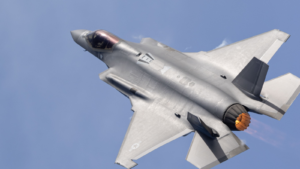In general, defensive stocks can be defined as names that have a low beta. Further, defensive stocks are invariably blue-chip stocks that have a healthy dividend yield. If exposure to these defensive stocks comes at a time when valuations are attractive, total returns can be meaningful.
For 2024, I would consider at least 40% to 50% exposure to blue-chip stocks. The reason is uncertainty related to GDP growth, monetary policies, inflation, and worries on the geopolitical front. This column discusses three of the best defensive stocks that are unlikely to correct from current levels. On the contrary, these stocks trade at attractive valuations and can potentially trend higher.
Walmart

Walmart (NYSE:WMT) stock is among the best defensive stocks to hold during uncertain times. WMT stock has a beta of 0.53 and offers a dividend yield of 1.37%. It’s also worth noting that in challenging macroeconomic conditions, the stock has trended higher by 15% year-to-date.
The good news for the coming months is that holiday sales are expected to rise by 3.5% to 4.6% between November and January 2024. This is likely to have a positive impact on the company’s earnings and the stock is likely to remain in an uptrend. Further, if there are rate cuts in the second half of 2024, it’s likely to boost consumption spending and hence retail sales.
From a financial perspective, Walmart reported operating and free cash flow of $18.2 billion and $9 billion respectively for the first half of 2024. Robust cash flows provide headroom for dividend growth and value creation through share repurchase.
Merck (MRK)

Merck (NYSE:MRK) stock has been rock solid in the last 12 months even as investors give biopharmaceutical stocks a miss. I believe that MRK stock is a quality defensive stock to buy and after an extended period of consolidation, a breakout might be on the cards. Further, MRK stock offers an attractive dividend yield of 2.88%.
One reason to like Merck is the fact that the Company has a quality clinical pipeline. Currently, 80 programs are in the second phase with another 30 in the third phase of trials. As late-stage candidates are commercialized in the next few years, growth visibility is likely to be robust.
It’s worth noting that for Q3 2023, Merck reported research and development expenses of $2.6 billion. This implies an annualized R&D spend of more than $10 billion. This underscores the company’s commitment to building a strong growth pipeline for a diversified range of medical conditions. As the market looks for value stocks, MRK is likely to be in focus and I expect steady value creation in the next few years.
Lockheed Martin (LMT)

Lockheed Martin (NYSE:LMT) is another stock that has remained subdued in the last 12 months. LMT stock trades at an attractive forward price-earnings ratio of 16.4 and offers a dividend yield of 2.83%. Given the business developments, I am bullish on LMT stock gradually trending higher and is worth holding until 2030.
An important point to note is that with rising geopolitical tensions, Lockheed Martin’s business will continue to grow. Even during the pandemic year, global defense spending increased. This puts the outlook for the sector into perspective. Lockheed, with investment in next-generation defense technologies, seems well-positioned to grow and create value.
As of Q3 2023, Lockheed reported an order backlog of $156 billion. The order backlog provides clear cash flow visibility. Lockheed’s guidance for the year implies a free cash flow of $6.2 billion. I would expect a similar or relatively higher FCF in the coming year. This provides headroom for healthy dividend growth besides the potential for capital gains.
On the date of publication, Faisal Humayun did not hold (either directly or indirectly) any positions in the securities mentioned in this article. The opinions expressed in this article are those of the writer, subject to the InvestorPlace.com Publishing Guidelines.
Faisal Humayun is a senior research analyst with 12 years of industry experience in the field of credit research, equity research and financial modeling. Faisal has authored over 1,500 stock specific articles with focus on the technology, energy and commodities sector.
